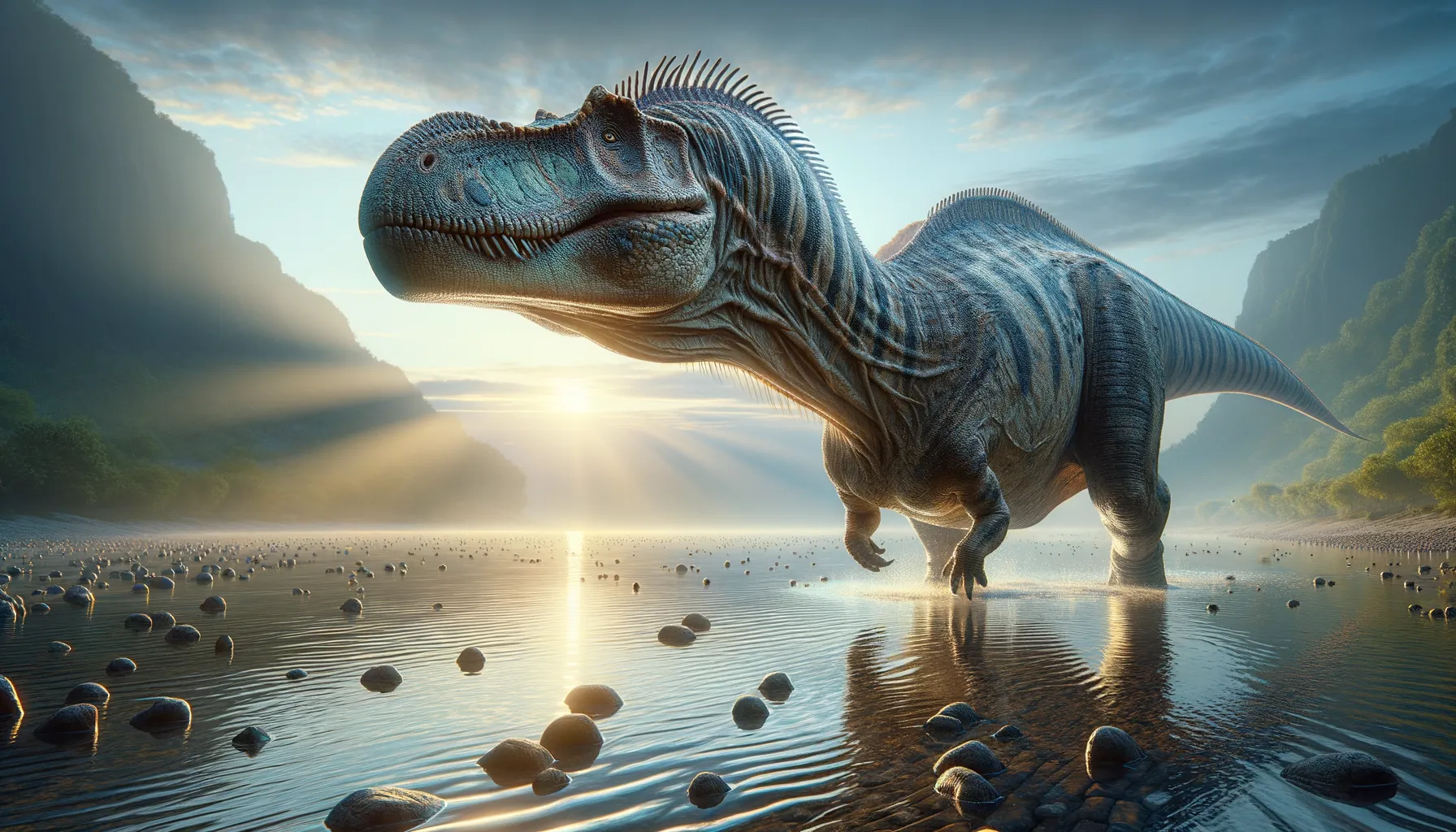
Tanystropheus
A creature of extremes with a long neck.
Period
Triassic
Length
Notable for its length of up to 6 meters (20 feet).
Height
Height around 1 meter (3.3 feet) at the shoulder.
Weight
Estimated to weigh around 100 kg (220 pounds).
Tanystropheus was a unique reptile well-known for its astonishingly elongated neck, which made up a large portion of its body length. It lived during the Triassic period and thrived in semi-aquatic environments. Its physical structure suggests it was adapted both for life in water and on land, allowing a diverse range of feeding and movement strategies. These vertebrates provided insight into evolutionary paths that reptiles took in adapting to different ecological niches.
Diet
Tanystropheus was likely a carnivore, primarily feeding on fish and small marine organisms. Its long neck would have been useful for quick strikes, capturing prey in water while remaining hidden behind submerged plants or rocks.
Hunting
This reptile used its long neck to ambush prey, likely waiting patiently to strike swiftly with its sharp teeth. Its hunting strategy took advantage of its semi-aquatic habitat, where it could leverage both water and land environments to catch prey.
Environmental challenges
Living in semi-aquatic regions meant Tanystropheus had to adapt to fluctuating water levels and conditions. Its lifestyle required the ability to navigate both land and water effectively, dealing with potential predators and competitors. Additionally, climatic changes during the late Triassic posed challenges, requiring it to be flexible in its behavior and diet.
Speed
It likely moved at a moderate pace.
Lifespan
Lifespan not well-documented, presumed to be several decades.
First discovery
Discovered first fossils in the mid-19th century.
Fun Facts
- Tanystropheus was not a dinosaur but a crocodile-like reptile that lived during the Triassic period.
- Its most striking feature was its extremely long neck, which was about three times the length of its body.
- Tanystropheus is believed to have lived both on land and in water, making it a versatile predator.
- Fossils of Tanystropheus have been found in regions that are now Europe and the Middle East, showcasing its wide habitat range.
- Some scientists think that this reptile used its long neck to catch fish or other aquatic prey without having to move its whole body.
- Despite its odd looks, Tanystropheus was likely a successful hunter in its ecosystem.
- The name Tanystropheus means 'long vertebra' in Greek, referring to its unusually extended neck bones.
Growth and Development
The growth of Tanystropheus likely involved gradual elongation of its neck, contributing to its notable size. Juveniles are presumed to have had shorter necks, developing their elongated appendages as they matured. This growth pattern possibly helped them adapt to different resources as they aged.
Habitat
The Tanystropheus inhabited coastal and lagoon-like environments, where land and water met. It thrived in regions rich in aquatic life, providing abundant food sources. The creature's habitat likely varied seasonally, with it moving between shallow waters and terrestrial settings as needed.
Interaction with other species
Tanystropheus shared its habitat with other marine and semi-aquatic organisms, including fish and smaller reptiles. Competitive interactions likely existed when it came to securing food sources. Predatory species may have viewed it as prey due to its considerable size and movement in water.
Natural lifespan
Tanystropheus likely lived for a few decades in the wild.
Reproduction
Reproduction involved laying eggs, similar to many reptiles. The nesting sites were presumably located on land, where the eggs were protected from predators. Successful development would require consistent temperatures and safety from environmental hazards.
Social behaviour
Little is known about the social behavior of Tanystropheus, but it is possible that like many reptiles, it led a solitary existence. Interaction with others may have been limited to mating periods. When resources were abundant, it may have tolerated the presence of other individuals nearby.
Fossil locations
Fossils have been found primarily in Europe and the Middle East, providing insights into their range during the Triassic period. Their remains indicate a broad distribution across what were then the continental margins, emphasizing their adaptability to diverse habitats. These fossils offer crucial data on the physical structure and evolutionary history of the species.
